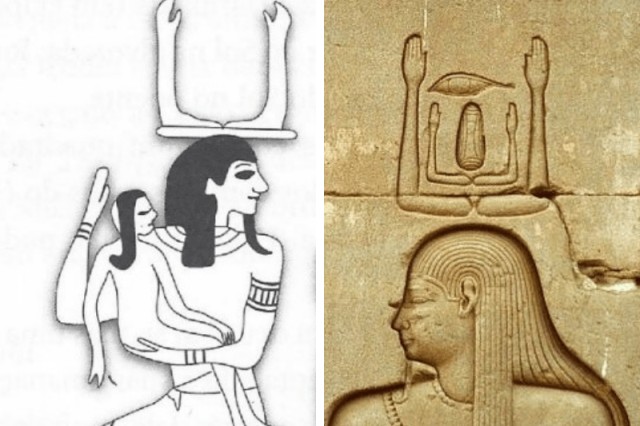KA
PART - 3

The
Ka was a symbol of offering and protection
Egyptian
Symbols | the ka :
Ka was the generative and affective vital force that related each
Being color to the universal force that animates the Cosmos.
His hieroglyph consisted of two arms raised in a gesture of adoration
or embrace. The Ka was a symbol of offering and protection.
Furthermore, it represented another notion: the name, the Ren.
The knowledge of each being's name was indispensable in Egyptian
magic as the name kept the identity secret. The fact of being
able to name gave the mage domain and summoning power. The Ka
provided the psychovital force that allowed the name to exist.
It also designated the faculty of a god, a person or an animal,
to carry out their acts in life. Therefore, it was associated
with food and offering, as an energetic support for all actions.
Origin
:
When the potter god Knum fabricated the first body with clay,
he created at the same time the Ka, the psycho-energetic double
of the physical body that was actually its invisible matrix.
Without Ka there is no life. To die for the Egyptians was to separate
the body from the Ka. The physical body belonged to this world,
while Ka dwelt in the visible and the invisible: he carried the
soul to the invisible, passing through the false door of the tomb.
Thus, it also represented the ancestral energy that was venerated
in the tombs by the living.
Horus, the founding god of the Pharaonic Royalty, bequeathed to
the first human King his Royal Ka, which was transmitted from
coronation to coronation.
The
power of ka :
The principles of Egyptian stone architecture are inseparable
from the concept of Ka. As we have seen, the Ka was a manifestation
of vital energies, not of a physical order, but rather of a psychic
one, which explained its role as animator of bodies, statues,
and offerings. In its manifestation, it had a creative and conservative
role. It could thus designate the power of Creation proper to
the Divinity or netjer, as well as the sustaining forces that
animated the universal order, Maat.
According to some authors, Ka is the "celestial double of
manifest or terrestrial things". But in reality, the definition
should be reversed: the terrestrial world is an “animated
copy” of Heaven, thanks to Ka, which is somehow the storehouse
of the vital forces from which life proceeds, thanks to which
life subsists and where life returns after death.
“The
desire for an eternal continuity of existence finds its tangible
expression in stone architecture, as it alone was able to provide
an indestructible symbol of the visible reality of the Ka. Unlike
the adobe building, which sufficed for the duration of human life,
the stone construction could withstand the onslaught of time.
That's why the Egyptians only built in stone the monuments of
eternity, the temples and the tombs, and never the houses and
palaces” (Schwarz, F., Geografia sagrada del Egypt Antiguo,
Editorial Errepar, Buenos Aires, 1996).
Hieroglyph
Ka :
The hieroglyph Ka was closely linked to the ancestral gesture
of transmitting a spiritual force. Hence the belief that the stone
could be the abode of supernatural forces: the raised stone, which
becomes pyramidal. This allows us to understand one of the enigmatic
texts found in the Unas pyramid: "Tuna puts its arms behind,
around the King, around this pyramid, the arms of the Ka, so that
the Ka of the King can last, - forever in the eternity".
Source
:
https://www.descobriregipto.com/
simbolos-egipcios-o-ka/

